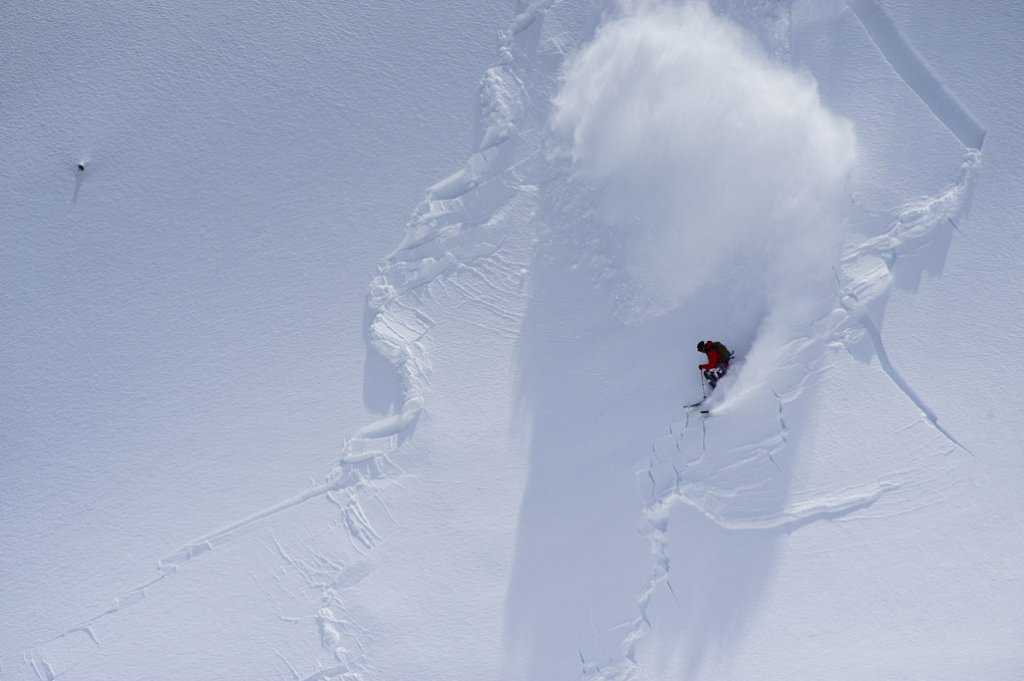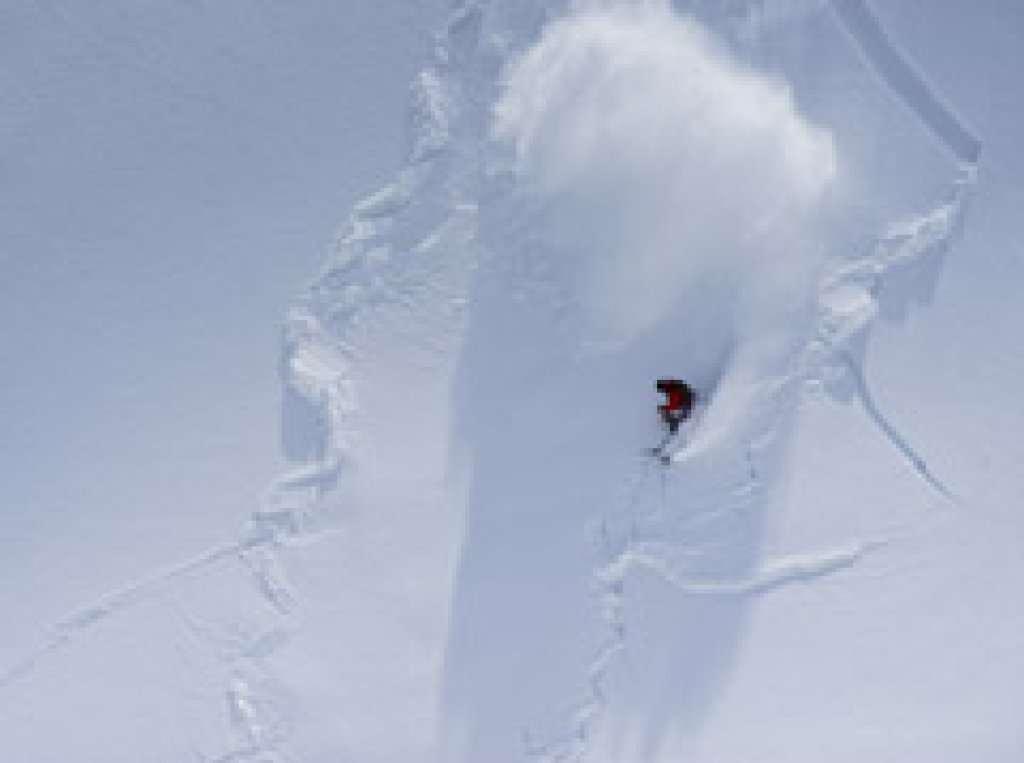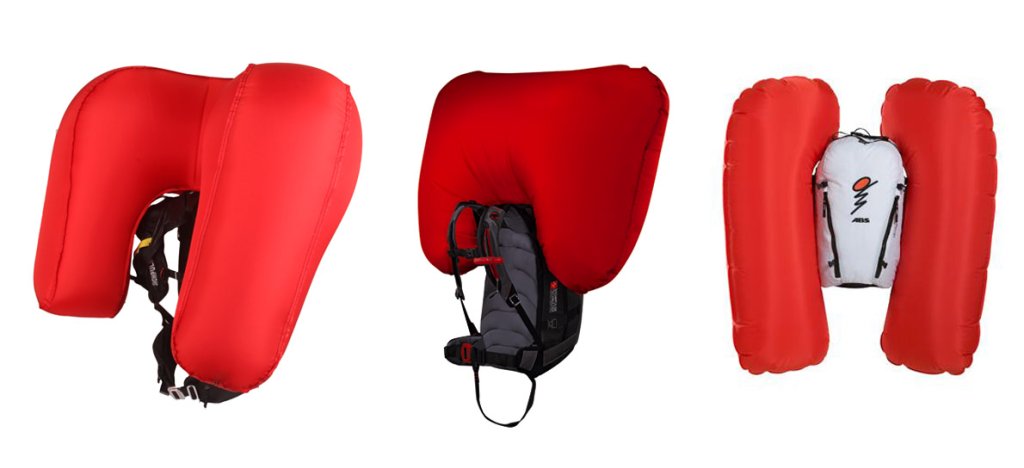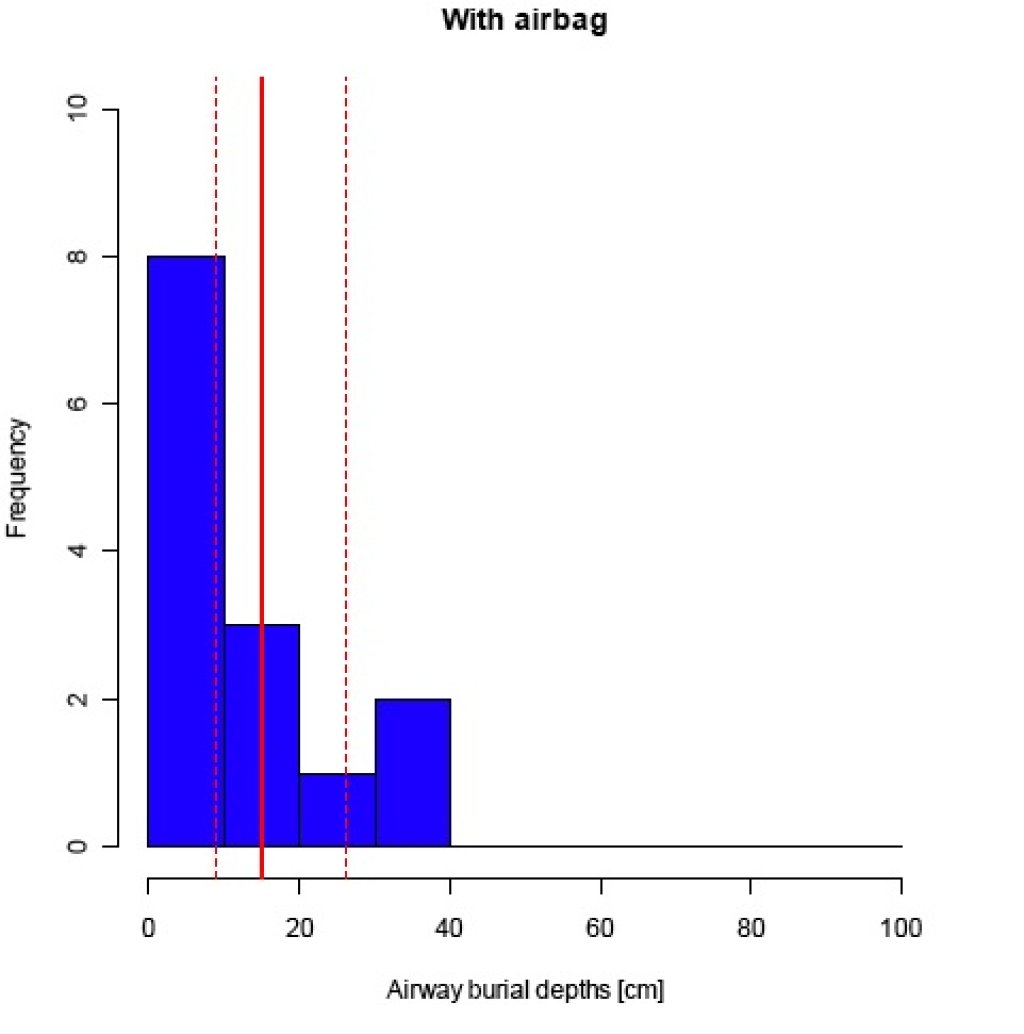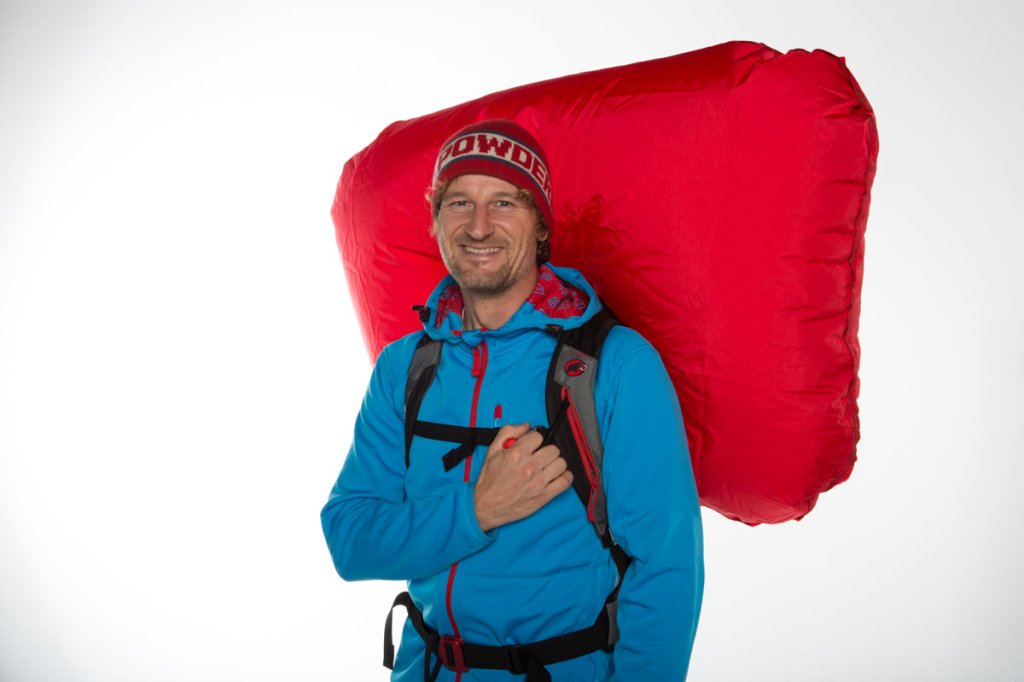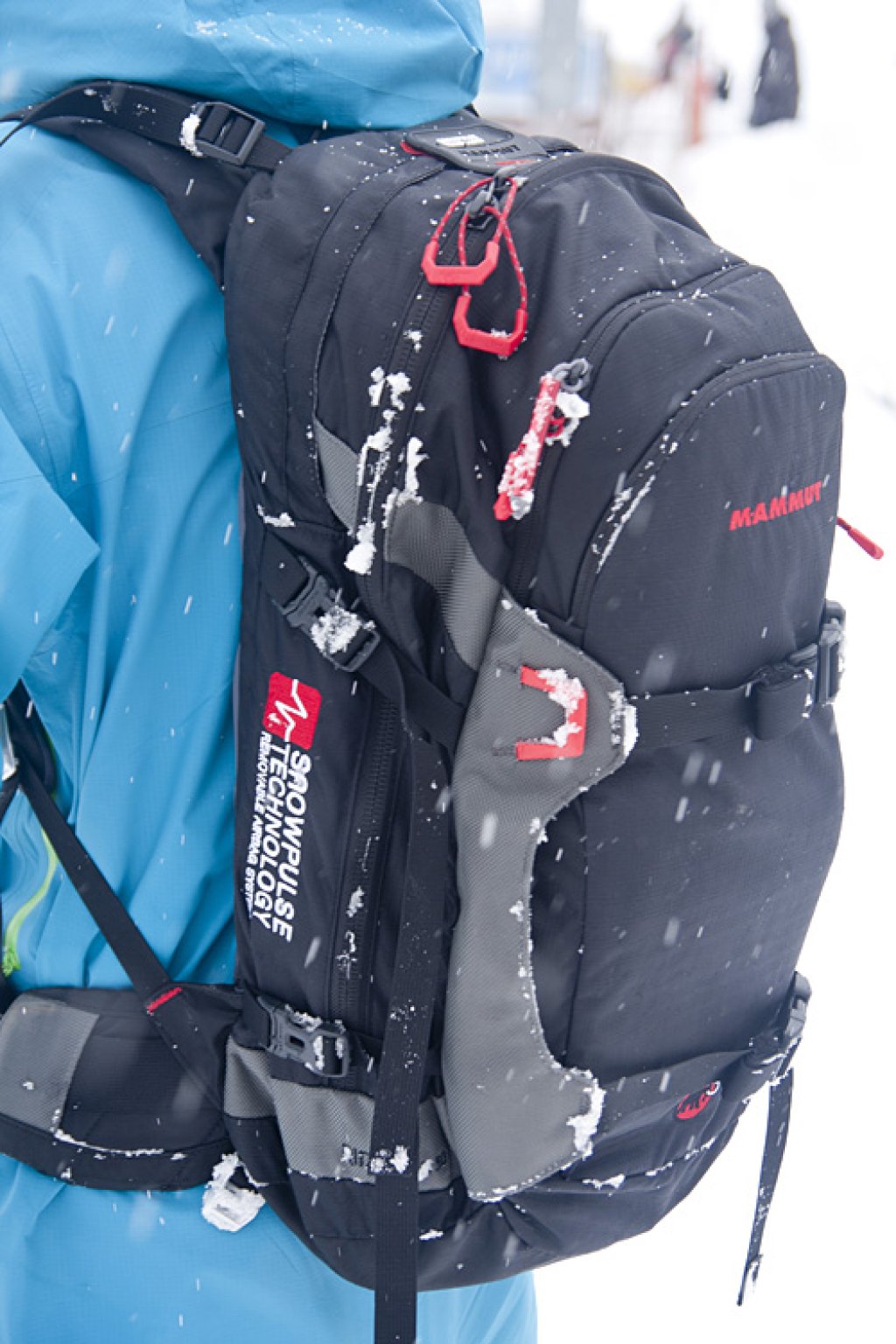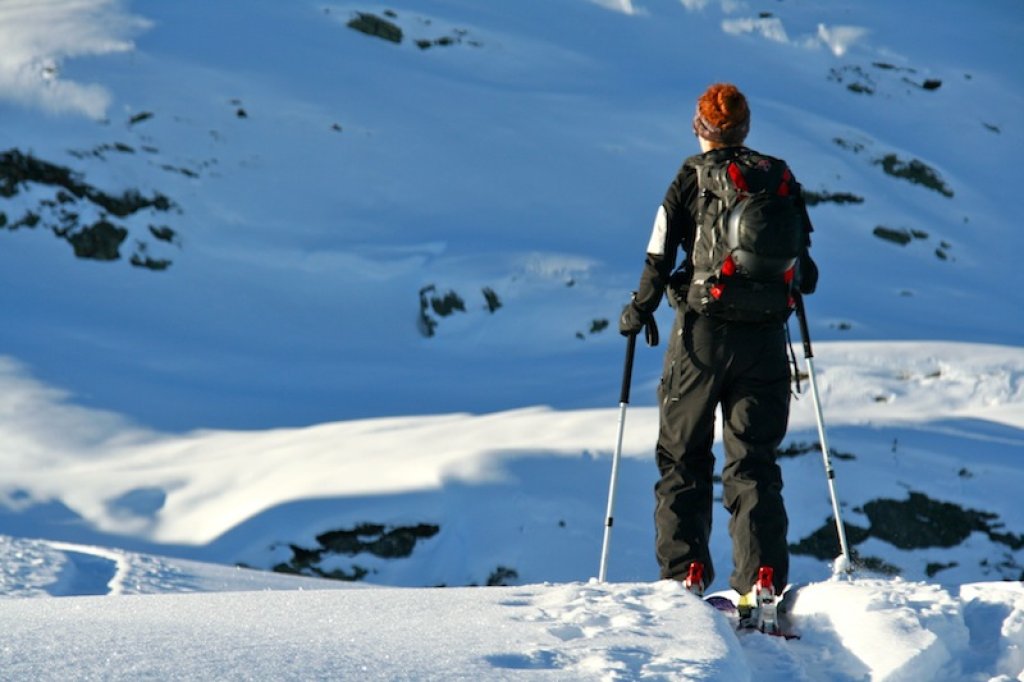In their report, the researchers point out that all triggered avalanches caught the victims in comparatively favorable terrain, as the test slopes run out flat in the lower area and do not have any strong slope fluctuations such as hollows or other typical accumulation areas. The comparatively shallow burial depth of the dummies of 53 cm on average confirms this assumption, as the average long-term burial depth, as shown by accident statistics from practice, is around 100 cm.
Results
In all tests, the avalanche airbags were visibly on the surface after the avalanche had stopped. The researchers point out that due to the comparatively small number of tests, the statistical significance of their results is limited, which is why they carried out a so-called bootstrap simulation to improve and increase the statistical reliability of the results. (For details on this procedure, see the paper in the original.)
The results show a clear trend: the Snowpulse and ABS airbag systems significantly reduce the burial depth. While the burial depth of the dummies without avalanche airbags varied between 25-63 cm in 95% of all simulated cases (95% confidence interval), the burial depth of the airbag-equipped dummies was significantly lower: in 95% of cases between 8 and max. 26 cm burial depth. The burial depth values given represent the burial depth measured from the airways of the victim dummies.
No statement could be made as to which airbag system - mono airbag (Snowpuls) or double airbag (ABS) - was able to achieve the better values in terms of burial depth. Here, both systems appear to be largely equivalent.
In addition, the strength of the forces acting on the head and neck area of the avalanche dummies was measured. The recorded data may provide clues as to which airbag system can better protect an avalanche victim from neck and head injuries. And here, due to the design of the Snowpulse airbag, there are advantages in favor of the Swiss system. This is shown by the recorded load diagrams. However, the researchers also point out here that further tests are needed to prove these results and the thesis that the Snowpulse system is better able to protect against head and neck injuries.
The forces occurring during avalanche descents are enormously high, which means that in several cases the backpacks were pulled massively away from the dummies. In several cases, for example, the chest strap of the backpacks was pulled to below the dummies' chins, which raises the question of the risk of strangulation. This underlines the fact that the manufacturer's recommendation to use additional leg loops is justified. However, as these leg loops are rarely used in practice, they were not used in this test either.
Summary & Discussion
The use of avalanche airbags significantly reduced the burial depth after an avalanche in the tests carried out: the average burial depth for the dummies without airbags was 42 cm, compared to 15 cm for the dummies equipped with airbags. The different designs of the Snowpulse and ABS airbags have no influence on the burial depth. However, the Snowpulse airbag appears to at least partially protect the head and neck of buried victims from high loads in the avalanche.
The advertising slogan of a well-known airbag manufacturer "Stay up, survive!" is not wrong in itself, but in the light of the study results it seems at least dubious, as this slogan suggests that using an airbag backpack would protect you from burial.
Whether the burial depth of the dummies adequately simulates the possible burial depth of real winter sports enthusiasts must, of course, remain open due to the impossibility of human testing. However, it should be noted that people could possibly be buried to a lesser depth by kicking, escaping and fighting. However, the possible opposite also applies here: if the trigger handle fails to be pulled in the extreme situation of an avalanche, the airbag system is of course ineffective.
The absolutely critical factor for the survival of avalanche victims is the depth of their burial: 18 minutes after an avalanche, more than 90% of fully buried victims are still alive. Thanks to modern avalanche transceivers, the localization of buried victims is now usually very quick, whereas the long time it takes to dig out the buried victim is in many cases decisive for the victim's survival.
